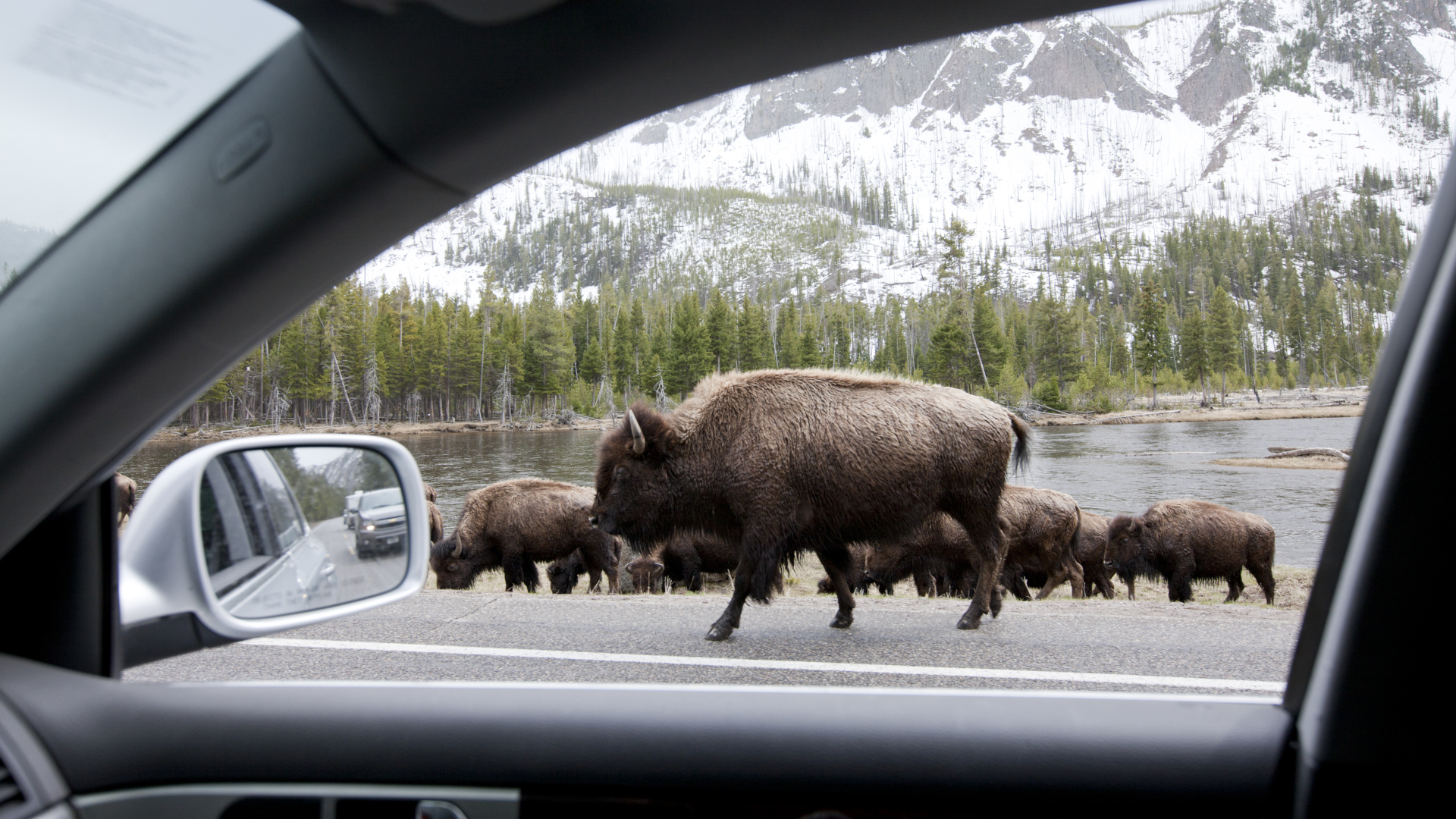
In Yellowstone, a tourist tries to pet a bison and is saved in the nick of time by an intervening park ranger. Up in Jasper National Park, an amateur photographer wants to get a closeup photo of an elk, and soon regrets it. Down in Great Smoky Mountains, a man tries to lure bear cubs away from their mother. Not a day goes by without a wildlife encounter of the far-too-close kind making headlines and wildlife expert and conservationist Peter Gros thinks he knows why.
“There are so many common mistakes that people make that I think have been enhanced by the use of cellphones. People want to get selfies and selfies mean they need to get up close and personal with the animals,” he says, speaking to us from Coeur d'Alene, Idaho where he’s on a break from filming the new season of the long-running show Mutual of Omaha’s Wild Kingdom.
Making matters worse is that when milder weather arrives and millions of tourists per year flood into the country’s National Parks, many animals such as Yellowstone’s bison have just been through a horrendous winter and are using roads to get around rather than their regular travel corridors, meaning they’re much more visible than normal.
Though the temptation to fling your gear stick into park and dash out to snap some pictures of that bison, grizzly or black bear crossing the road may be strong, Gros says instead, take advantage of technology, get yourself a really nice pair of binoculars or camera and get up close to the wildlife that way.
“Stay in your vehicle, enjoy the fact that you can see them up close without getting out. There are great long lenses now and you can look at an animal that’s 500 yards away and see the color of its eyes.”
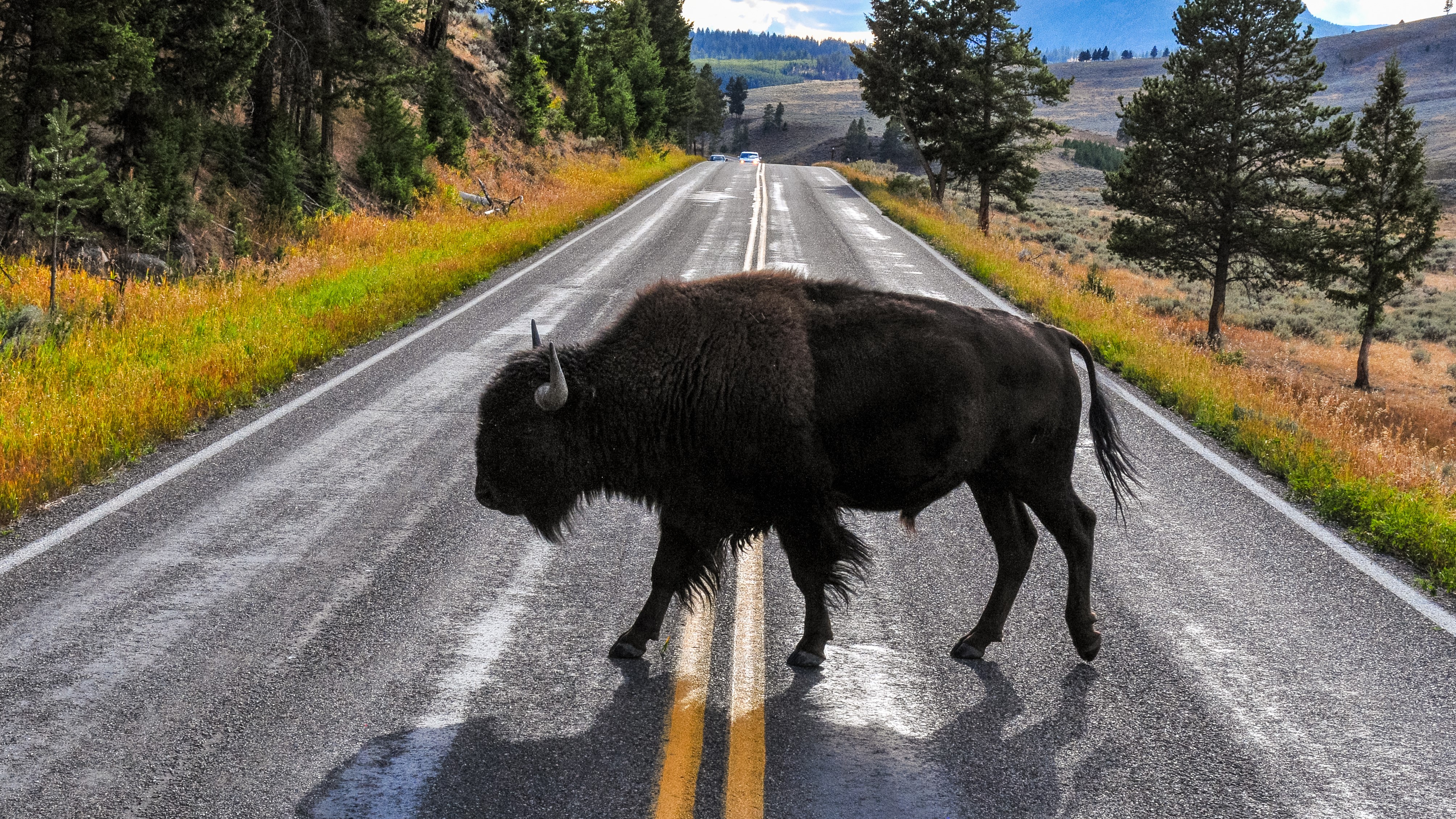
“Wolves don’t even like the way we smell"
Gros, originally from New York’s Hudson Valley, has a long history of viewing wildlife up close, from afar. He became co-host of Wild Kingdom back in 1985, a profession that has taken him from Australia’s barrier reef to the Damaraland of South Africa, and all across America’s famed National Parks. These days, the show's producers are making ample use of modern technology such as drones, movement sensor cameras and heat sensor cameras to document wildlife that doesn't even know it’s being filmed.
This year marks 60 years since the show’s debut, and though he credits Wild Kingdom for inspiring multiple generations of Americans to get curious about wildlife, he also admits that some nature-based shows may in part be to blame for the many wildlife mistakes we see people committing today.
“We see so many nature films where they portrayed marauding wild animals like sharks and grizzly bears and lions looking for people to consume, which we know is not true.”
Basically, you’ve got the Big Bad Wolf effect, but as Gros explains, there is no such thing, even despite successful programs to reintroduce them in places like Michigan’s Isle Royale.
“Wolves don’t even like the way we smell, they don’t want to be near us, and until recently there hadn’t even been a recorded incident of a human being being killed in this country by a wolf.”
That incident occurred in 2010, in a small village in southwest Alaska where humans and wolves have lived side-by-side for as long as anyone can remember, and shocked the country with its rarity.
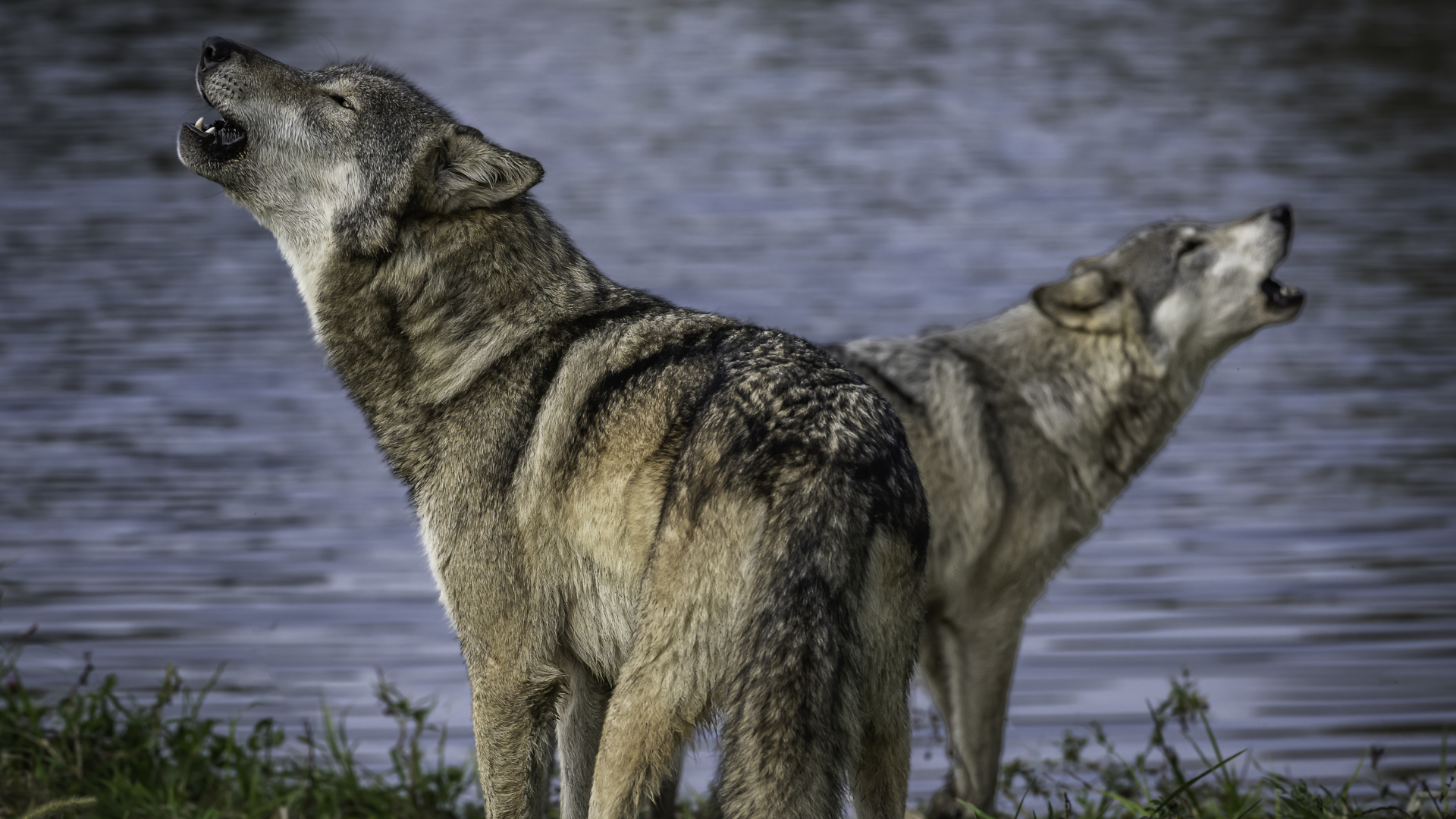
“They aren’t our friends"
Another animal that gets a bad rep for being a people chomper is the grizzly bear, and while humans are killed by grizzly bears at a greater rate than they are by wolves, they’re by no means the evil predators we’ve been led to believe.
“Grizzly bears are large carnivores, but they aren’t necessarily thinking of people as food. What they are thinking of is that if they have their cubs with them and if you get too close then you've got a problem. They're very protective.”
Most attacks, like the one on Jeremy Evans that we reported on in January 2023, occur because someone unwittingly gets between a mama bear and her cubs. Stories like these leave people feeling fearful of wildlife that really doesn’t want anything to do with them, and that can cause even the most well-intentioned hikers to make bad decisions.
On the other end of the spectrum, there are those sentimental shows that might make you believe you can hug a baby moose. Shows where wild animals can be your best friend, like Flipper, the bottlenose dolphin or Skippy the Kangaroo, who seemed to think nothing of having out with humans all day. This type of representation might in part account for the hordes of people who don't think twice about getting within a couple of feet of something that weighs nearly a thousand pounds and can run at speeds of up to 35 miles per hour.
In the middle of these two opposing representations, Gros says, lies the truth.
“They aren’t our friends, they’re very much wild animals. They don’t want to get close to us.”
The message is clear: give them space. But then again, Gros says, not too much.
“I really believe it’s important that we have a balance in life. We spend an awful lot of time staring at screens and I think we need to be spending much more time out in the natural world. It’s healthy for us physically and mentally and we want people to get outside and enjoy nature and not fear it.”
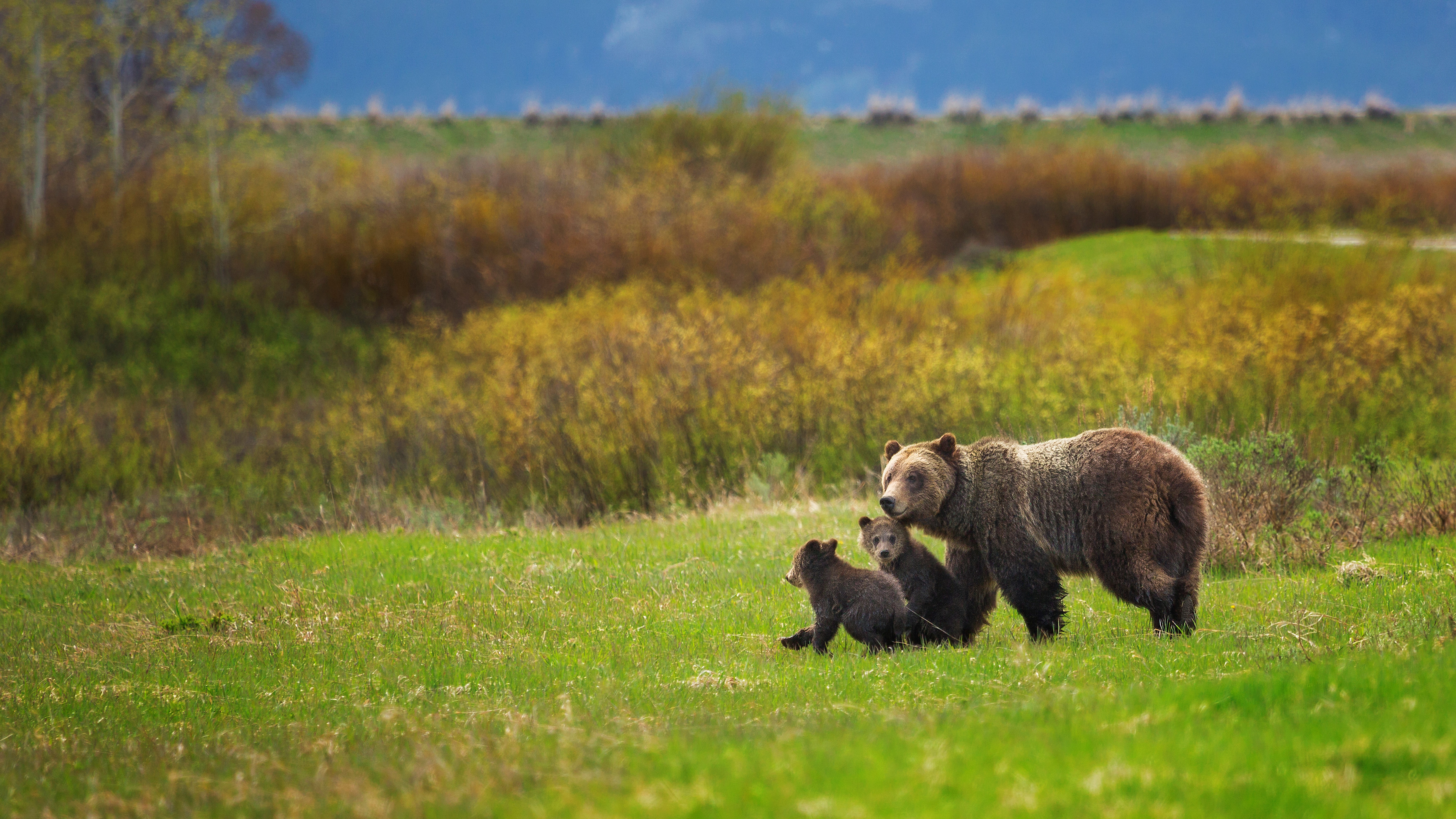
"You may have written a bear's death certificate"
Gros encourages viewers to get their kids out in nature as early as possible so they can form a connection with it early, just as he did with his three sons, whom he took on adventures across lands like Desolation Wilderness, Yellowstone, Zion and Bryce Canyon, putting bells on the boys’ backpacks so they didn’t startle any bears.
“It was really unnecessary because they were chattering away the whole time anyway, everything in the forest knew we were coming,” he laughs.
The idea, however, is to get your hiking boots on and see the natural world – Gros himself recommends a 3 a.m. start to climb the Half Dome trail in Yosemite for some of the best wildlife viewing on the planet. Just don’t startle the wildlife while you’re doing it (even bears climb Half Dome, after all), and scare it enough to feel it has to defend itself.
While you’re out there, he urges you to strictly follow the principles known as Leave No Trace, or as he puts it, leave only footprints, and be especially careful when it comes to your food. Food-related incidents, like bears breaking into vehicles for a snack, are some of the biggest causes of unwanted wildlife interactions.
“Almost all bears have the most sensitive nose of any animal in the world and they seem to have a stomach that’s never full,” says Gros. If you leave food around your campsite and don’t use bear boxes, the consequences for the bear in question are likely to be much more serious than they are for you and your plans of a picnic lunch.
For starters, as Gros points out, humans are famous for eating pretty much anything these days, processed or otherwise, which is not healthy for the animals. Then you’ve got the fact that bears quickly get used to the idea that humans equal easy grub, and lose their fear of us, which is not a good thing.
“It’s much easier for bears to take people’s food than it is to go foraging for berries and after they do that a couple times you may have written a death certificate for a bear with your carelessness,” warns Gros, suggesting that upon arriving at a National Park, you go straight to the visitors center and speak to rangers about wildlife safety in that park before exploring.
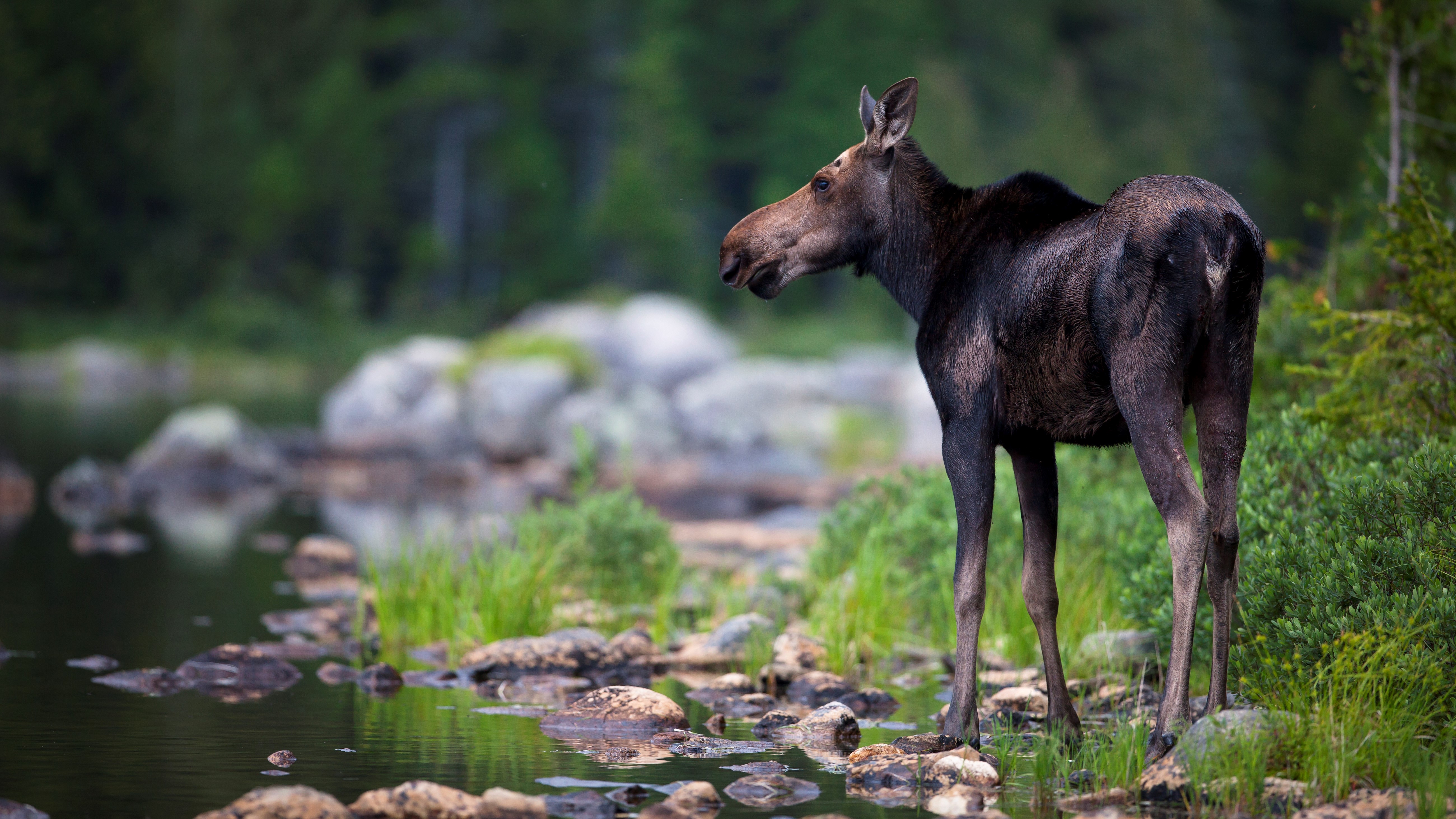
"It's not too late for wildlife"
Despite the multitude of stories about wildlife attacks and doom and gloom about climate change affecting wildlife, Gros himself prefers to focus on the positive stories of conservation success, such as the black-footed ferret, thought to be extinct but have been recovered and returned to the wild. Then there are the puffins that are nesting once again on islands off the coast of Maine and the bald eagle that was poisoned nearly to extinction by DDR in water sources and now thrive in the hundreds of thousands in North America.
“It’s not too late. We do have serious problems with wildlife but wildlife can be resilient,” says Gros, who urges you to find out what you can do locally to support wildlife, from planting flowers that attract butterflies or pollinators and removing invasive plants.
The long and the short of it? Get your kids out in State and National Parks, enjoy wildlife through a long lens, and bring everything back with you.







